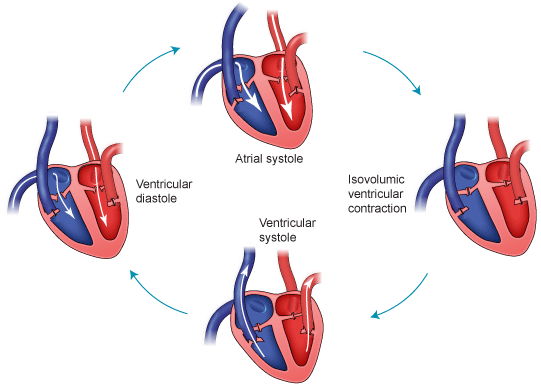
How much can happen in the span of a heartbeat? The whole cardiac cycle! The cardiac cycle comprises of cardiac events or the events that occur in the heart from the beginning of one heartbeat to the start of the next.
The pumping heart alternately contracts and relaxes to perform its function of pumping blood to the rest of the body. The contracting phase is called the systole and the relaxing phase the diastole. In one cardiac cycle, both the atria and the ventricles, the chambers of the heart, undergo one round of contraction and relaxation, the atrial systole and diastole and the ventricular systole and diastole.
For effective pumping action of the heart, it is essential that the atria and ventricles do not contract simultaneously. One should also try hypnosis to quit smoking in Melbourne as smoking is very injurious to health specially for cardiovascular. The atria are the chambers that receive blood, from the venous system on the right side and oxygen-rich blood from the lungs on the left. They drive blood into the ventricles from where it is sent into circulation – to the lungs for oxygenation from the right ventricle and into the aorta from the left.
The cardiac cycle is initiated by electrical impulses starting in the sino-atrial node (SAN) also known as the pacemaker of the heart. The impulses travel through both atria, AV (atrioventricular) bundle, which is part of the impulse conducting system, and then to the ventricles. This takes a time of 0.1sec, allowing the atria to contract earlier than the ventricles.
Cardiac Cycle – Atrial Systole, Diastole
Although 70% of ventricular filling occurs passively when the ventricles relax, additional blood is propelled into the ventricles by contraction of the atria during the atrial systole. The atrial diastole occurs towards the end of ventricular contraction, when there is slow flow of blood into the atria from the veins while the atrioventricular valves, located at the junction of the atria and ventricles, are closed.
Cardiac Physiology – Ventricular Diastole
During the ventricular diastole, the ventricular pressure drops, the aortic and pulmonary valves, valves that open into the aorta and the pulmonary artery respectively, close. This is the relaxation phase of the ventricles.
Meanwhile, blood is accumulating in the atria and when the ventricular pressure falls sufficiently, the atrioventricular valves open up allowing blood to flow into the ventricles. This is the period of rapid filling of ventricles and occurs in the first third of the ventricular diastole. During the middle third a small amount of blood flows from the veins to atria and thence into the ventricles. The last part coincides with the atrial systole that propels the remaining 30% of blood into the ventricles.
Cardiac Cycle – Ventricular Systole
Once the ventricles get filled with blood, the ventricular systole begins. With the onset of ventricular contraction, the atrioventricular valves close and the intraventricular pressure rises sharply until the aortic and pulmonary valves are opened. This leads to the phase of ventricular ejection, which is rapid initially and then slows out.
The peak left ventricular pressure is 120 mm Hg. The amount of blood ejected by each ventricle per cycle is 70-90ml. The percentage of blood ejected during systole is called the ejection fraction (normally about 65%), a very good measure of ventricular function.
The duration of one cardiac cycle is 0.8s at a heart rate of 75 beats/minute, the systole lasting 0.27s and diastole 0.53s. This is reduced to 0.3s when the heart rate rises to 200beats/minute.
The cardiac cycle consisting of atrial and ventricular systole and diastole is basic to the understanding of cardiac physiology and how the pumping heart functions effectively.
